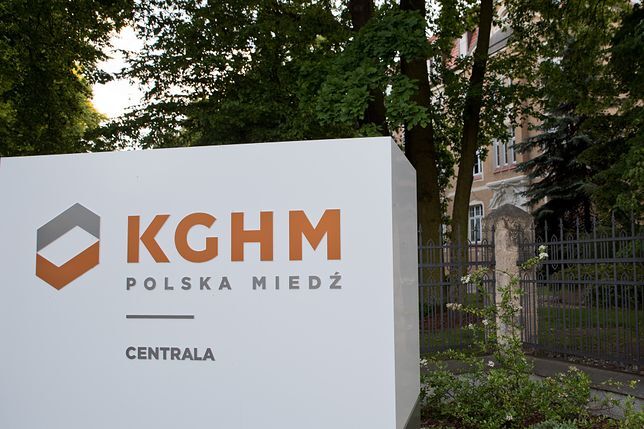KGHM has not determined the final location for the construction of a small modular nuclear power plant
Preparations for the investment process, analyses, and studies - KGHM is checking the possibility of building a small modular nuclear power plant (SMR) in Poland. The company is taking a responsible approach to its plans for the investment project, which is likely to be implemented in Poland. An SMR will strengthen and ensure energy security not only for the company, but also for the entire country.
At the preliminary stage of the preparation for the investment project, which involves, among other things, the determination of the location for the SMR, KGHM has identified several sites in the Lower Silesian, Opolskie, Lubuskie, and Wielkopolskie Provinces. Two municipalities in the Wielkopolskie Province (Lubasz and Wieleń) appeared in the basic decision issued by the Ministry of Climate and Environment, but this does not mean that the project will be carried out there.
DIALOGUE AND STUDIES
The basic decision issued to the company only allows the company to begin activities aimed at preparing the investment and construction process in the two municipalities identified, but does not limit the investor’s ability to apply for an amendment to the decision already issued or to apply for another basic decision for other potential sites identified by the investor.
It is worth noting that the approval of the location of a nuclear power plant is a multi-stage process in which the investor is required to obtain, in addition to a basic decision, in particular, an environmental constraints decision, a location decision, a building approval, a building permit, a commissioning permit, and an operating permit. The investor must conduct detailed location and environmental studies at the potential locations. At this stage, KGHM is planning to conduct an information and education campaign, and to launch processes that will enable it to listen to the opinions of local communities. The company is in contact with the authorities of the municipalities of the most likely locations for this investment project.
Cooperation with local governments in the framework of this campaign will be aimed at disseminating knowledge about nuclear power, conducting a dialogue with the residents, providing support for the implementation of local social initiatives, and raising public acceptance for the planned investment project. In this regard, KGHM is planning to emulate good practices related to the implementation of the Polish Nuclear Power Program.
STEP BY STEP
Before the final decision is made, further measures are needed to check the potential environmental impact of the power plant (environmental studies) and the possible external threats to the power plant in the area (location studies). Environmental studies are preceded by the investor’s preparation of a Project Information Sheet (PIS), which is where the exact location options for the planned investment project in the municipalities will be eventually determined. It is estimated that the PIS will be prepared no earlier than in the 3rd quarter of 2024. It takes 2 to 3 years to conduct all the required studies and monitoring, and the final outcome is an Environmental Impact Report and a Location Report prepared by the investor. The Environmental Impact Report then undergoes public and transborder consultations and is subject to review by the General Directorate of Environmental Protection. The Location Report is attached to the application for a building approval.
The basic decision is the first decision in the system of administrative permits for investment projects concerning nuclear power facilities in Poland that an investor can apply for. The last administrative permit required to be obtained by the investor in this system is the decision authorizing the operation of a nuclear power facility.
SECURITY AND THE FUTURE
KGHM is engaged in the extraction and processing of valuable natural resources. KGHM’s main product is copper, but the company also mines and processes precious metals - silver and gold - and others such as molybdenum, lead, and selenium. The company also has production facilities in North and South America. The copper ore reserves controlled by KGHM worldwide - 40 million tons - make it a leader of the mining industry.
Metal mining and processing are extremely energy-intensive. In an effort to minimize the environmental impact of its operations, KGHM has adopted an ambitious Climate Policy that aims to achieve climate neutrality by 2050. One of the strategies to achieve this goal is to build the company’s own emission-free sources of electricity. It would be impossible to ensure a continuous, reliable supply of energy only from renewable sources such as windmills or photovoltaic panels. Therefore, KGHM’s development plans also include the construction of a nuclear power facility, more specifically small modular reactors (SMR).
SMR is a promising technology that has been developed for years around the world and has several advantages over large nuclear reactors, including shorter construction time; the ability to manufacture modules, i.e. individual nuclear reactors, in a factory and deliver them to the operation site using rail or water transport; safety based on passive systems that guarantee safe shutdown of the reactor in the event of an accident without the need for intervention by the operator, availability of electricity, or emergency supply of cooling water; and very small safety zones with a radius of several hundred meters, which means no impact of the power plant on nearby buildings.
KGHM is considering SMR projects based on the light-water technology, which is best proven in the past operation of large nuclear power plants. The projects being considered are mainly developed by companies from the UK, France, and the United States. KGHM intends to select the best reactor technology for its SMR project (in economic, environmental, and safety terms) in compliance with the best global standards with transparency and competitiveness.



